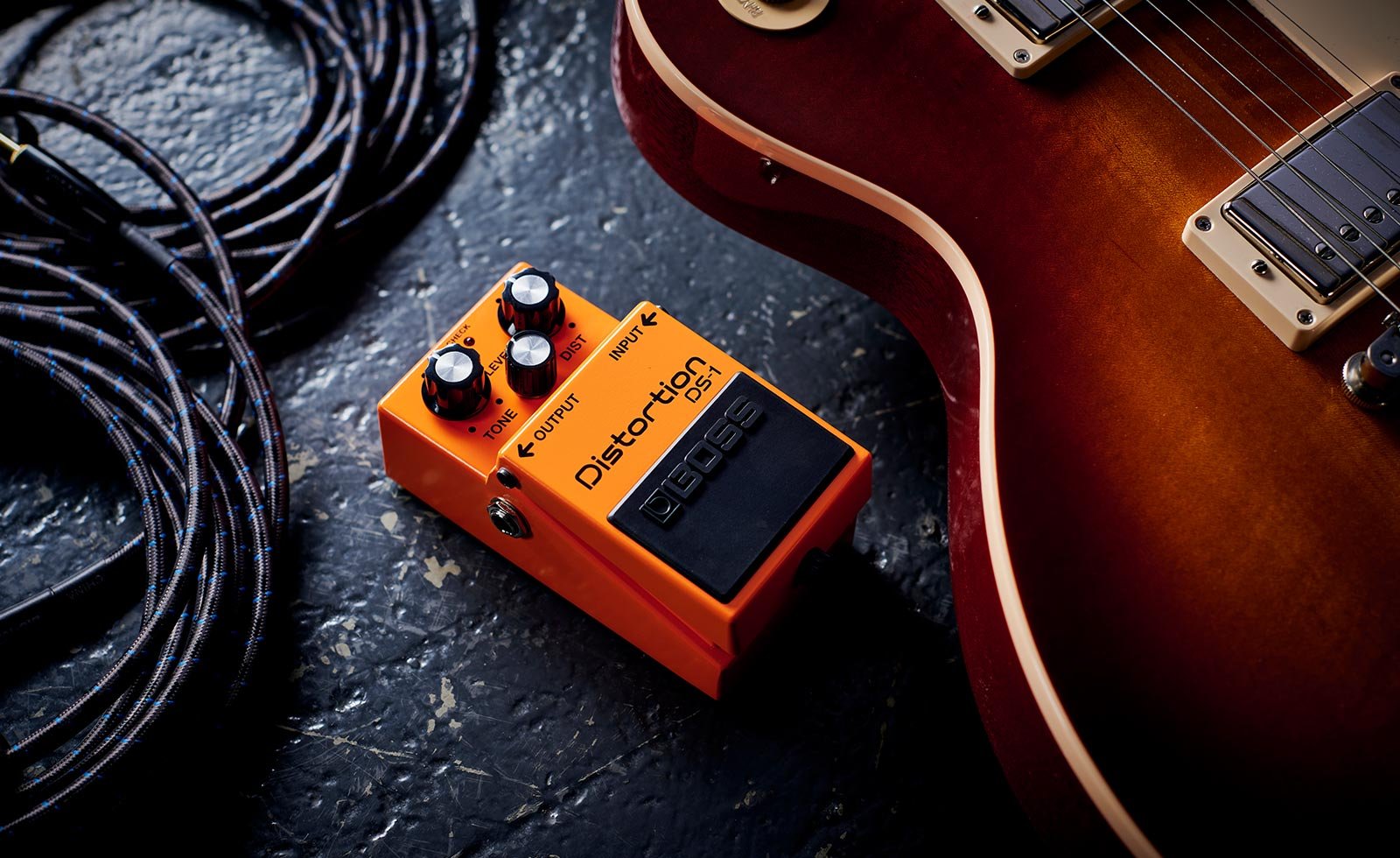Boss DS-1
Good enough for John Frusciante and Kurt Cobain.
£63 at guitarguitar.co.uk | £68 at thomann.com
For a very long time, the DS-1 could be purchased brand new for around £30, which, likely, was the main driver of its success. The Boss DS-1 has been used by many famous guitarists, including Kurt Cobain and John Frusciante. The pedal that is available today has changed quite a bit since its initial release in 1978, as Boss streamlined their production process and utilised surface mount components. Rest assured though, it still sounds the same as it did in 1978, while offering more consistency and reliability.
The Boss DS-1 is a great-sounding distortion, but its use case is fairly narrow. When used as the only source of gain, it is very sharp and thin sounding. The tone control can be hard to get right. The DS-1 features a “tilt” EQ that affects lows and highs with a single control. Turning the knob simultaneously boosts and cuts each end of the spectrum. So if you just want to add a bit of bottom end by turning down the tone, you end up losing high frequencies, resulting in a very muddy signal and vice versa.
The distortion sounds mediocre on its own. Instead of getting a saturated tone with lots of sustain, the DS-1 sounds very thin and sharp as you turn up the gain. It can also get quite noisy. These drawbacks get even more amplified if you use the pedal with single-coil pickups.
So why did so many famous guitarists have it on their boards? Because they did not use clean amps. Cobain used a Mesa Boogie and Frusciante had a Soldano SLO and a Marshall JCM800. Indeed this is the use case, where the Boss DS-1 really shines. If you want your already distorted guitar to cut through a mix, the DS-1 is the right tool for the job. The sharpness of the pedal is drowned out when going into another overdrive and the tone control range is much more useful in this scenario as well.
If you do want to keep your clean tone available, put the DS-1 in front of your favourite overdrive pedal and you are good to go! I like pairing the DS-1 with a Wampler Tumnus into an edge-of-breakup Revv D20. The noise can still be a bit of an issue, so just make sure you don’t stop playing until the pedal is switched off… or use a noise gate.
When the DS-1 cost just £30, it was easy to justify. Not to mention that, back in the 80s, your pedal options were extremely limited. It was mostly a choice between the DS-1 and the MXR Distortion+. Now we are spoiled for choice. Curt Cobain and Frusciante both moved on to use the DS-2, which has a more versatile EQ response. The DS-2 is still available today and costs about the same as the DS-1.
There is also the ProCo RAT. The Rat has an equally impressive list of famous guitarists, like James Hettfield and Dave Grohl. It costs just a little bit more than the DS-1, but it is much more versatile. Not only can you get the same gain stacking qualities from it, but it is also a great-sounding distortion into a clean amplifier.
Another pedal worth considering is the newly released Boss DS-1W. It has the same signature sound as a DS-1, but the EQ response has been tweaked to sound much better without gain stacking. It also features an improved buffer and a lower noise floor. Although for £130, I would rather buy a Boss SD-1 and DS-1, rather than the single Waza pedal.
Bottom Line
The Boss DS-1 is not a very versatile pedal. If you want to push an already distorted amp even further, it will do the job, but it is not a great source of distortion on its own. At £65, it is priced just a little bit below its competition. There are however more versatile pedals out there that cost about the same and will do what the DS-1 does, but more and better.




